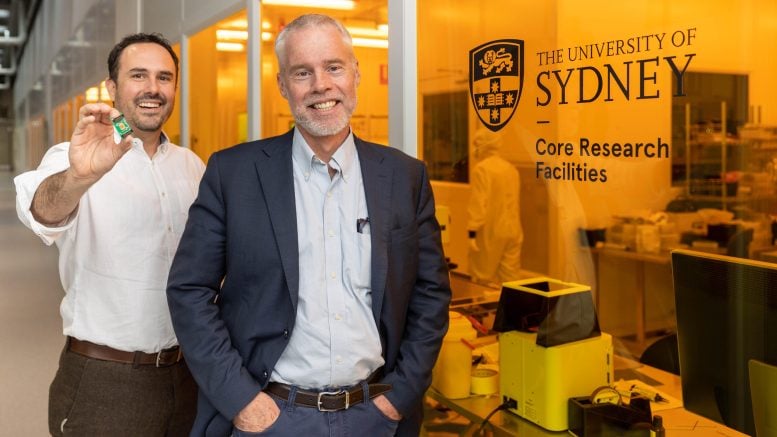
Scientists have innovated a compact semiconductor chip integrating electronics with photonics, drastically enhancing RF bandwidth and control. This breakthrough, pivotal for advanced telecommunications and radar systems, marks a significant step in semiconductor technology, boosting Australia’s potential in semiconductor research and manufacturing (Artist’s concept). Credit: SciTechDaily.com
Integrating photons into electronic chips enhances bandwidth and improves filter control.
Researchers at the University of Sydney Nano Institute have developed a small silicon semiconductor chip that combines electronic and photonic (light-based) elements. This innovation greatly enhances radio-frequency (RF) bandwidth and the ability to accurately control information flowing through the unit.
Expanded bandwidth means more information can flow through the chip and the inclusion of photonics allows for advanced filter controls, creating a versatile new semiconductor device.
Researchers expect the chip will have applications in advanced radar, satellite systems, wireless networks, and the roll-out of 6G and 7G telecommunications and also open the door to advanced sovereign manufacturing. It could also assist in the creation of high-tech value-add factories at places like Western Sydney’s Aerotropolis precinct.

Dr Alvaro Casas Bedoya in the Sydney Nanoscience Hub at the University of Sydney holding a silicon wafer used to manufacture semiconductors. Credit: Stefanie Zingsheim/The University of Sydney
Innovative Design and Construction
The chip is built using an emerging technology in silicon photonics that allows the integration of diverse systems on 
Dr Alvaro Casas Bedoya (holding the chip) and Professor Ben Eggleton in the Sydney Nanoscience Hub at the University of Sydney Nano Institute. Credit: Stefanie Zingsheim/The University of Sydney
Professor Eggleton highlighted the fact that most of the items on the Federal Government’s List of Critical Technologies in the National Interest depend upon semiconductors.
Strategic Importance and Local Impact
He said the invention means the work at Sydney Nano fits well with initiatives like the Semiconductor Sector Service Bureau (S3B), sponsored by the NSW Government, which aims to develop the local semiconductor ecosystem.
Dr Nadia Court, Director of S3B, said, “This work aligns with our mission to drive advancements in semiconductor technology, holding great promise for the future of semiconductor innovation in Australia. The result reinforces local strength in research and design at a pivotal time of increased global focus and investment in the sector.”
Designed in collaboration with scientists at the SciTechDaily